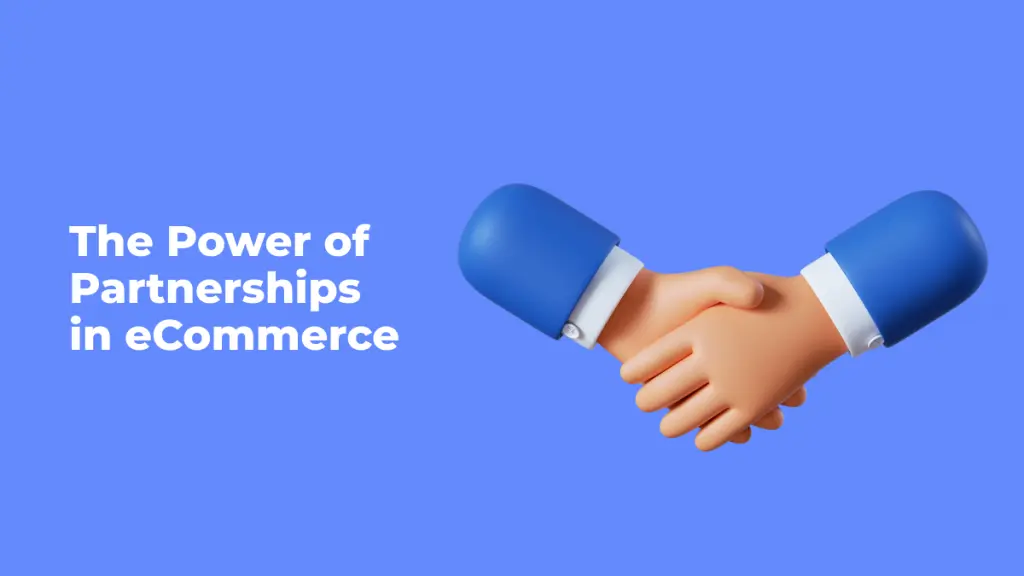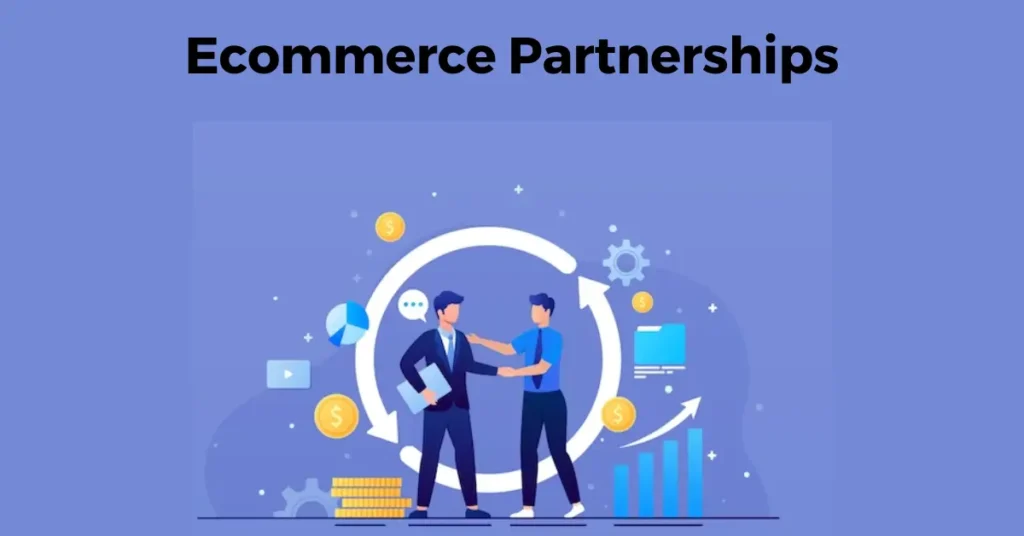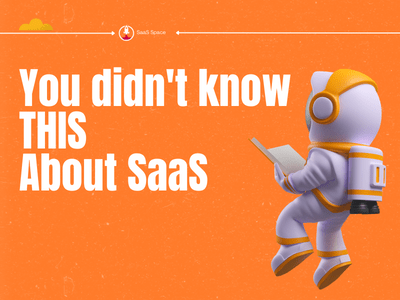The Software-as-a-Service (SaaS) market is increasingly looking to the rising e-commerce market as a new growth sphere to tap into. Cooperative partnerships with shopping and services websites on the Internet are revolutionizing the way SaaS scales in a networked digital world.
SaaS growth is no longer associated merely with one-off subscriptions or enterprise licensing. Visionary SaaS companies today are making smart partnerships within e-commerce platforms to extend their reach to more people, offer more value and attain recurring revenue. It is a new match based on flexibility, integration and a customer-centric mindset.

Why SaaS and E-commerce Are a Natural Fit
Both SaaS and e-commerce partnerships have a digital-first foundation. Both thrive on speed, scalability and end-user value. The greater complexity in online commerce leads to merchants becoming increasingly reliant on SaaS solutions to have smoother operations, be that through inventory management, easier marketing, or automated customer service.
The demand for smooth and reliable integrations created an ideal market opportunity for SaaS players to become trusted partners. These systems don’t just deliver utility; they represent the required infrastructure behind a successful online store.
Working alongside a shopify agency, as a case in point, SaaS products can adapt functionality to merchants’ distinct needs. This may consist of embedded analytics dashboards, loyalty scheme integrations, or subscription control functionality that adapts to small or large stores. These products allow merchants a point of differentiation, while SaaS companies grow their headcount by establishing key, scalable partnerships.
The partnership works because it’s a win-win. SaaS gains fast access to niche audiences and merchants gain access to growth-driving tools.
Using Affiliate Networks to Expand SaaS Footprint
E-commerce is a highly networked space, filled with influencers, creators, agencies and resellers all ready to create value and revenue out of their networks. A SaaS company can unlock tremendous potential by launching a affiliate or referral campaign through their e-commerce partners.
If a merchant or digital services firm already has a captive market, suggesting a SaaS product—especially one that touches a real pain point—comes across as natural and sincere. These are frequently high-conversion referrals because the recommendation is given from a trusted source.
SaaS companies can take a further step by offering tiered affiliate rewards, personalized onboarding kits and access to real-time performance dashboards. These not only motivate their affiliates but also allow their efforts to scale smarter.
It’s a good bet to witness rapid traction if a SaaS tool is supported by a popular e-commerce guru or implemented into a working Shopify site than if a tool is marketed through a cold email program or search discovery alone.
The affiliate model is especially useful for young SaaS products that are trying to build brand awareness and traction in competitive markets like shipping, analytics, or personalization.
Improving Customer Retention Using Integrated Tools and Services
Customer acquisition is half the equation—retention represents persistent profit. Deep integration into other workflows is one of the strongest retention mechanisms for SaaS products. When a tool is deeply embedded into a merchant’s operation, it is more likely to stick around and not get replaced.
Consider a SaaS offering, such as one that automates email marketing for an online store. If such a product is easy to use, integrates nicely with product listings and fuels sales growth, then it becomes part of a merchant’s day-to-day operations. Such reliance creates stickiness, meaning a customer will not churn as easily.
Working closely with consultants or online store agencies enables SaaS companies to identify pain points and how to build product features that become increasingly applicable. These can be used as training materials, guides, or support information to make the product all the more indispensable.
Also, frequent updates, data visualization, and personalization in software make users more eager to stick around in the long term. These extras create trust and emotional attachment to the site—converting users into proponents of the site’s brand.
SaaS User Acquisition on E-commerce Sites

Integrating with a well-evolved e-commerce site is like putting your store out front for thousands, potentially millions, of would-be buyers. Extension marketplaces, app stores and lists of recommended tools on these sites are shelf space for today.
By making themselves discoverable in these ecosystems, SaaS companies reduce friction in customer acquisition. Internet vendors sifting through application libraries are solution-centric and ready to install solutions that help them solve their current needs.
To effectively tap into this opportunity, SaaS companies ought to develop slim, hassle-free installation integrations with a distinct value prop clearly explained. Visual media, actual client testimonials and demo videos on the listing all work toward improved adoption rates. Optimizing these assets through SaaS SEO strategies such as keyword-rich descriptions, structured data, and internal linking can further enhance visibility and discoverability on search engines, driving more qualified traffic to the listing.
Some networks also allow partners to have joint promotions or land on hand-vetted “best of” lists, attention that can yield a constant flow of high-intent leads. These new users can quickly become subscribers when coupled with optimized onboarding and timely support.
Win-Win Bundling with E-commerce Products
The product bundling principle has been a retailing staple for decades and in this digital age, it’s no exception when crafted strategically between SaaS and online purchasing and sales companies. Both can enhance perceived value and accrue more revenue without drastically increasing acquisition costs.
For example, a high-end photographic or camera merchant can bundle a subscription to a SaaS product such as a digital asset manager or a photo-editing product. A seller of planners and calendars can bundle access to a time or a scheduling manager SaaS product. These bundles become a one-stop purchase solution and realize a tighter integration between the SaaS product and the seller’s brand.
Bundles also facilitate cross-marketing. Both brands can jointly promote the offer via email campaigns, social media and blog posts, maximizing reach and minimizing duplication of effort.
These bundles typically introduce SaaS products to new consumer segments that would not have discovered them otherwise. And by bundling products, firms can construct customized solutions that build higher loyalty and client satisfaction.
Successful SaaS–E-commerce Collaborations in the Real World
Most of today’s leading SaaS businesses succeed because of early and tactical involvement in the e-commerce partnerships arena. It wasn’t just a matter of selling a tool—it was providing themselves as merchants’ extended businesses.
Consider SaaS products aimed at optimizing conversions at checkout. These products typically start out by building a relationship with leading e-commerce consultants or agencies. They then showcase case studies, white-glove onboarding and data-driven performance reporting that illustrate their value. These partnerships serve as social proof and open the doors to bigger integrations.
Other solutions focus on vertical-specific markets, such as SaaS products for subscription box firms or drop shippers. By designing solutions for the pain inherent in these niche markets and building partnerships with e-commerce communities, these SaaS solutions instantly build credibility.
Common to all cases was alignment. When SaaS solutions are in alignment with their partner’s values, objectives and customer experience, results are sustainable and rewarding for both parties.

Key Strategies for Building Long-Run, Scalable Relationships
Partnerships in e-commerce are not a one-time plan, but a long-term growth initiative. In other words, in order to sustain them, SaaS companies have to be proactive, responsive and partner-centric. Everything starts with clarity: knowing who your true partners are and what mutual success is.
Then there’s infrastructure. SaaS organizations should have ready training materials, co-marking materials and integration support to facilitate seamless onboarding for partners and end-users as well. Shared webinars, tutorials and case studies can educate users and establish a relationship.
It’s also important to maintain open communication. Check-ins, performance reviews and shared KPIs keep partnerships on course and pointed toward the future. A partner manager or success team shows dedication and builds trust.
Finally, keep iterating. The e-commerce partnerships world moves fast. Great SaaS suppliers are always iterating on their integrations, updating features based on partner feedback and examining different bundling or pricing formulas to stay ahead and have value.
For more information check out our website.
- Top 5 Best AI Presentation Makers in 2026 - December 24, 2025
- Best AI Text Generator Plugin for Woocommerce: WriteText.ai - December 23, 2025
- The 5 Best AI Tools for PowerPoint Presentations in 2025 - December 22, 2025


